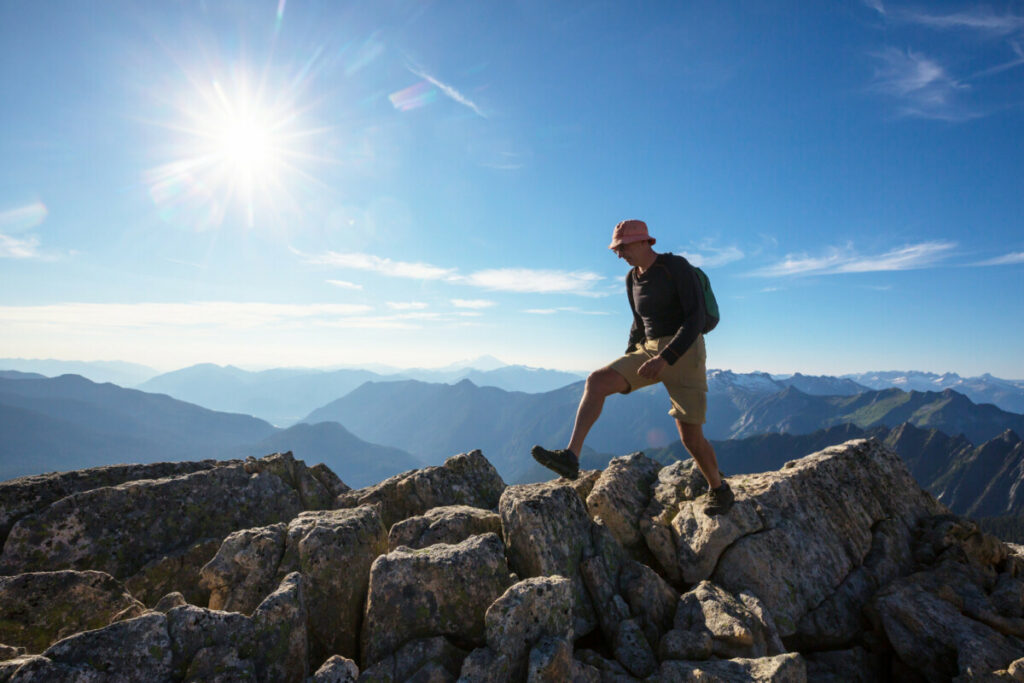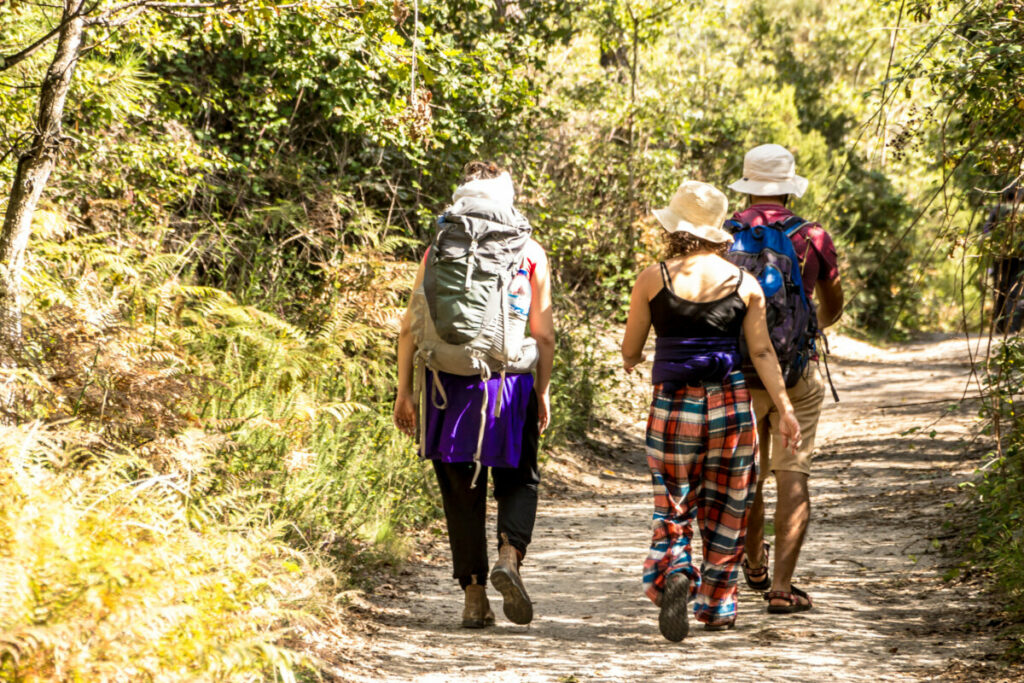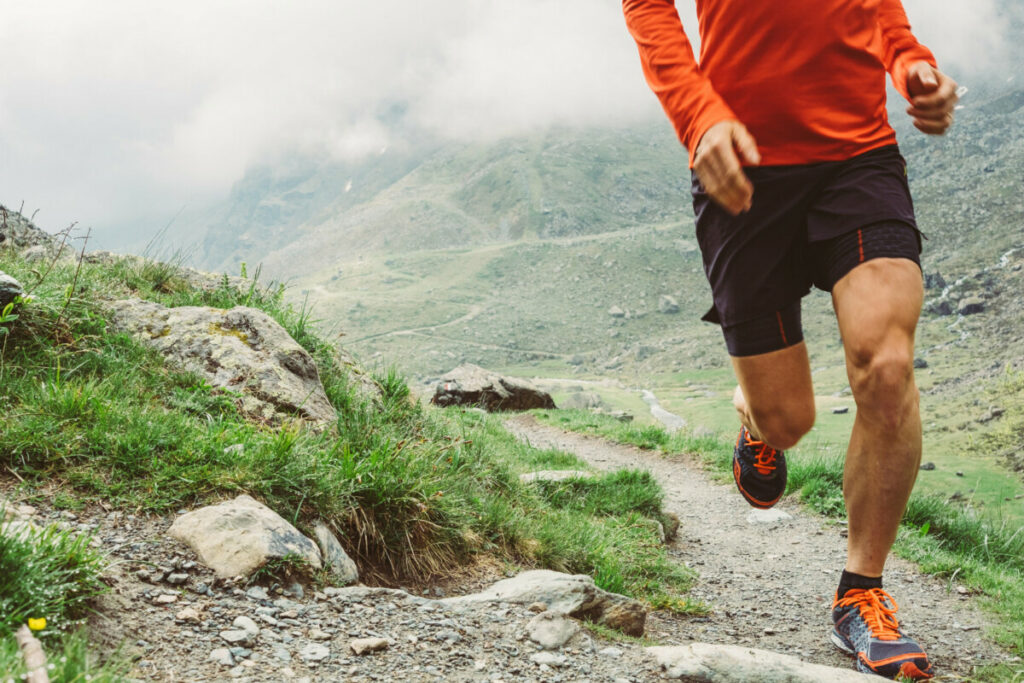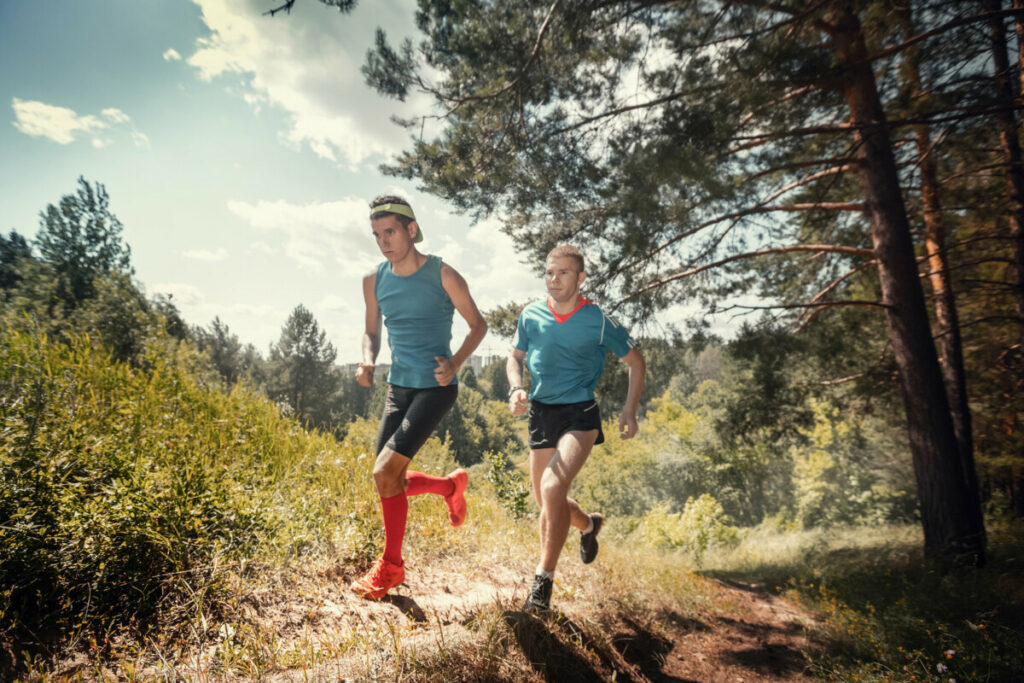
So you have a trip coming up and part of it involves a trail. You think that you have the correct equipment but you’re not sure what the difference between hiking and trail running is.
Hiking and trail running are similar activities but they differ drastically in intensity and length. Hiking is lower in intensity but generally longer in length. Trail running is higher in intensity but generally is a shorter activity. Most supplies can be used interchangeably between the two.
While they do share some things in common there are some important things that you should know about each of them. Here is an explanation of what hiking and trail running is and some things you should keep in mind for each of them.
What is Hiking
Hiking could be described as a walk with bumps. Unlike a walk around your neighborhood, a hike is going to take you on a mini adventure. Instead of a sidewalk, you’ll be on a trail heading out into the unknown. The trail may be paved, covered with gravel, or just plain dirt. It may be large or narrow. Part of the appeal of hiking to me is that you will never be able to find two identical trails. Every trail has its own mix of terrain and things that make it up.
One part of hiking is the speed at which you do it. Hiking is going to be done at a slower pace with most hikes not going faster than a brisk walk. Since it is at a walking pace there are some key differences between it and trail running. During a hike, because you go at a slower pace a trail will take much longer to hike than to run. While you can hike quickly, hiking will still be a bigger time commitment than trail running. If you are strapped for time you will need to find a shorter hike or only do part of the hike before turning around.

One good thing about hiking is that it is a great equalizer. While there can be a large variety of speeds people run at, there isn’t as much of a difference in the speed that people walk at. This means that you can more easily do a hike with a large group. You will have to make some adjustments based on people’s ages and experience, but hiking will always be an easier social experience than trail running.
Something to keep in mind while hiking is who is in your group. If you have kids or older people hiking with you, you may want to focus on a shorter and easier hike. Children in particular will struggle with uneven trails or trails that are very steep. If you have more experienced hikers in your group that would be the time to find a more rugged trail to clamber up. If you aren’t planning on hiking with a group, make sure that someone knows where you are planning to hike. If you were to get lost or hurt while hiking, this helps rescue personnel to find you quickly.
Another thing to keep in mind is what condition the trail is in. Depending on what the trail is made out of, the weather or season could drastically change the trail you’re on. For example, if it has been raining recently a dirt trail may turn muddy, and a trail with a lot of rocks and tree roots is going to be slippery. On the other hand, if the trail is paved or coated with gravel rain it probably won’t change your experience on the trail. The seasons can also change a trail. If you are hiking a trail in the spring or early summer a trail may not have snow at its base but may have snow and ice as you climb higher.
Before doing a hike make sure that you are prepared. Have hiking shoes or boots that you have worn before. If you are planning on traveling for a hike make sure you know where the trailhead is, and bring a map if you have a copy of it. For longer hikes make sure that you work up to them, do shorter hikes that get progressively longer to prepare yourself. If you can hike with someone who has hiked your trail before or has experience with similar hikes. Bring food, proper clothing, and plenty of water.
What is Trail Running
Trail running while similar to hiking has some big differences as well. The biggest difference is one that is found in the name, running. While hiking tops out at a brisk walk, trail running is well, a run. Now, this doesn’t mean that you can’t walk while trail running. If you hit a steep portion of the trail or need to take a quick break, feel free to walk. The difference between the two isn’t that you can’t walk while trail running, instead it is the top speed. Trail running will generally take less time than a hike because you do it at a higher average speed.
One of the important things to know about trail running in my opinion is how to run on a trail. I have experience trail running on a variety of different types of trails, so here are a couple of tips that I have picked up over the years. My first suggestion is to start at a slower speed than you think that you will be comfortable with. While it might seem like an overly simple idea, the best way I can say it is an unfamiliar trail is an unfriendly trail.
Like I said earlier no two trails are going to be alike, so you can’t show up to run on a trail and expect it to be like another trail you’ve hiked or ran before. There may be some similarities, but in the end, they will be different.

Even though there are these differences there are some general rules that I can offer you. Don’t tailgate other runners in your group. Because a trail is going to vary in incline and makeup, you will want to give yourself and others space to speed up and slow down their pace as necessary. There should be at least three strides of distance between you and the person in front of you.
On narrower trails, it is best to run in a single file. For wider trails, you may be able to have multiple people in a row. Make sure that everyone has space to take a step or two to the side without colliding with another runner. This allows you to avoid obstacles safely.
When you meet other users of a trail be sure to be courteous. Generally, hikers and trail runners should yield to mountain bikers and horseback riders. Hikers generally yield to runners. An exception to this is when there is an incline. Whoever is climbing uphill tends to have priority and anyone descending should move to the side of the trail and give them space to climb.
Depending on the surface of the trail, trail runners can adjust accordingly. A paved even trail could be treated as a road or sidewalk when running. Gravel is similar to paved as well as hard-packed dirt. Trails with lots of rocks or tree roots need to be treated differently. You will need to shorten your stride and make sure that you are keeping an eye on the trail beneath your feet. You should avoid jumping over large rocks and obstacles. If you cannot avoid rocks try and brace off of them using your toes. You may need to slow down if you hit an extremely technical portion of the trail.
A final thing to keep in mind is the grade or steepness of a trail. This will affect the amount of effort it takes to climb the trail. The steeper and rougher the trail is the more tiring it will be to run on it. Something to keep in mind is that trail running will consume way more calories than hiking will. One study found that running can consume twice as many calories as walking or hiking can. So keep in mind that just because you can hike a certain distance, doesn’t mean that you can run that far. Take breaks as needed while running, and make sure that you are with someone, or people know where you plan on going.

Equipment You Will Need
While trail running and hiking are similar sports they tend to use different types of equipment. However, depending on the intensity and distance of your trip you may be able to use the equipment for both which can save you time and money. If you are first starting out it may be best to borrow this equipment from a family member or friend.
Over time as you gain more experience and better understand the equipment that meets your needs, you can begin to buy and maintain your own equipment. This isn’t meant to be an exhaustive list, you may not ever use some of this equipment and you may have other things you want to bring with you. Always look for things that best meet your needs.
Hiking
For hiking, the first thing that you are going to want to look for is a good pair of shoes. When hiking you are going to be using your feet the most and keeping them happy and healthy is your first concern. You may have already started to look for hiking shoes or boots. If you have you’ve seen that there are hundreds of different products all with different sizes, colors, laces, and odd-sounding designs. Don’t worry, there is a simple way to find the product that you want. This is a good rule to follow; look for something that matches the terrain you are hiking on.
For a simple paved asphalt or concrete trail, you may not even need to get a new pair of shoes. As long as you have a pair of simple tennis shoes they will be the best option for an easy hike. They are breathable, most people have them sitting around their house, and they can withstand a bit on an incline and a small amount of dirt and water. Just make sure that your feet sit comfortably in them and don’t slide around when you walk. This will help prevent you from getting blisters. While tennis shoes are an easy option they should only be used for shorter and smoother hikes.
As the trails get more rough, like dirt or rocky trails, or get longer you may want to invest in hiking shoes or boots. The big difference between the two of these is that shoes are typically more flexible and sit below your ankle while boots encase your foot up to above your ankle and are stiffer. Hiking boots will provide the most possible support for your feet. They tend to be waterproof, have a hefty sole with plenty of grippy rubber, and support the joints in your toes and ankles. Their downside is they aren’t breathable footwear, can be expensive, and need to be broken in before being used for hiking.
The step between tennis shoes and hiking boots is hiking shoes. These combine some aspects from both ends of the spectrum to provide a hybrid product. They are more breathable than boots and provide more grip and stability than tennis shoes. However, they aren’t as durable or waterproof as boots. Trail running shoes are a similar product to hiking shoes. The downside to these shoes is they don’t provide as much grip at a slower pace as hiking.
Trail Running
For trail running over a simpler trail, you can use your regular running shoes. As the trails get steeper and rougher you may want to invest in a pair of trail running shoes. These shoes provide more support to your feet, have a tougher sole that holds up better to rocks and roots, and provide better grip. Remember many of these shoes are designed to be used while running and so may not have the best grip while walking or hiking.
For Both
While hiking and trail running there is some equipment you should bring for both. Dress in layers, you can always take off a layer and leave it on the side of the trail or wrap it around your waist, but you can’t pull an extra layer out of nothing. While it might be warm at the base of the trail it tends to get colder as you climb. A small pouch to hold snacks, your phone, and a small water bottle are good things to bring along. For long runs or hikes, a hat, sunscreen, and bug spray may be necessary.

